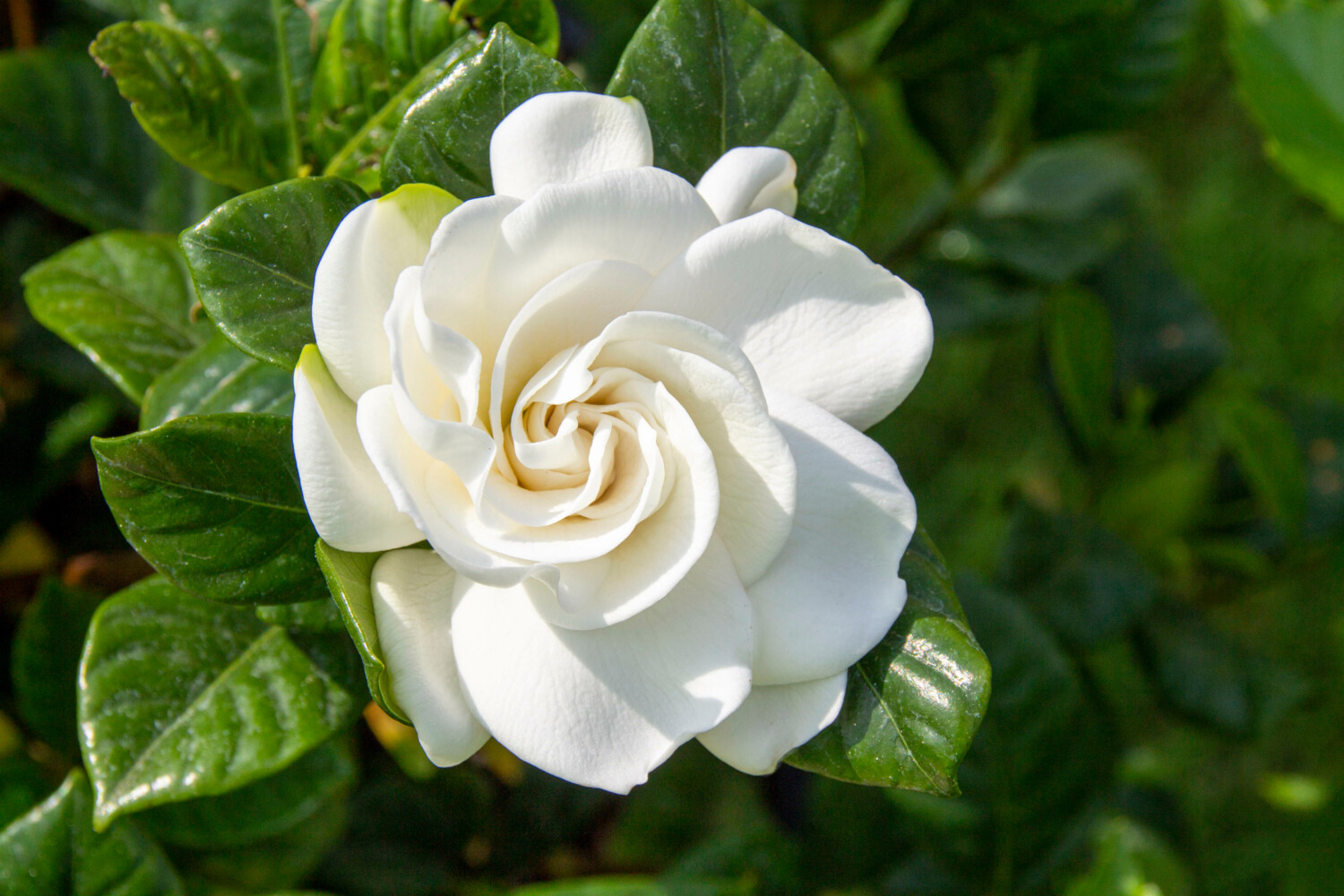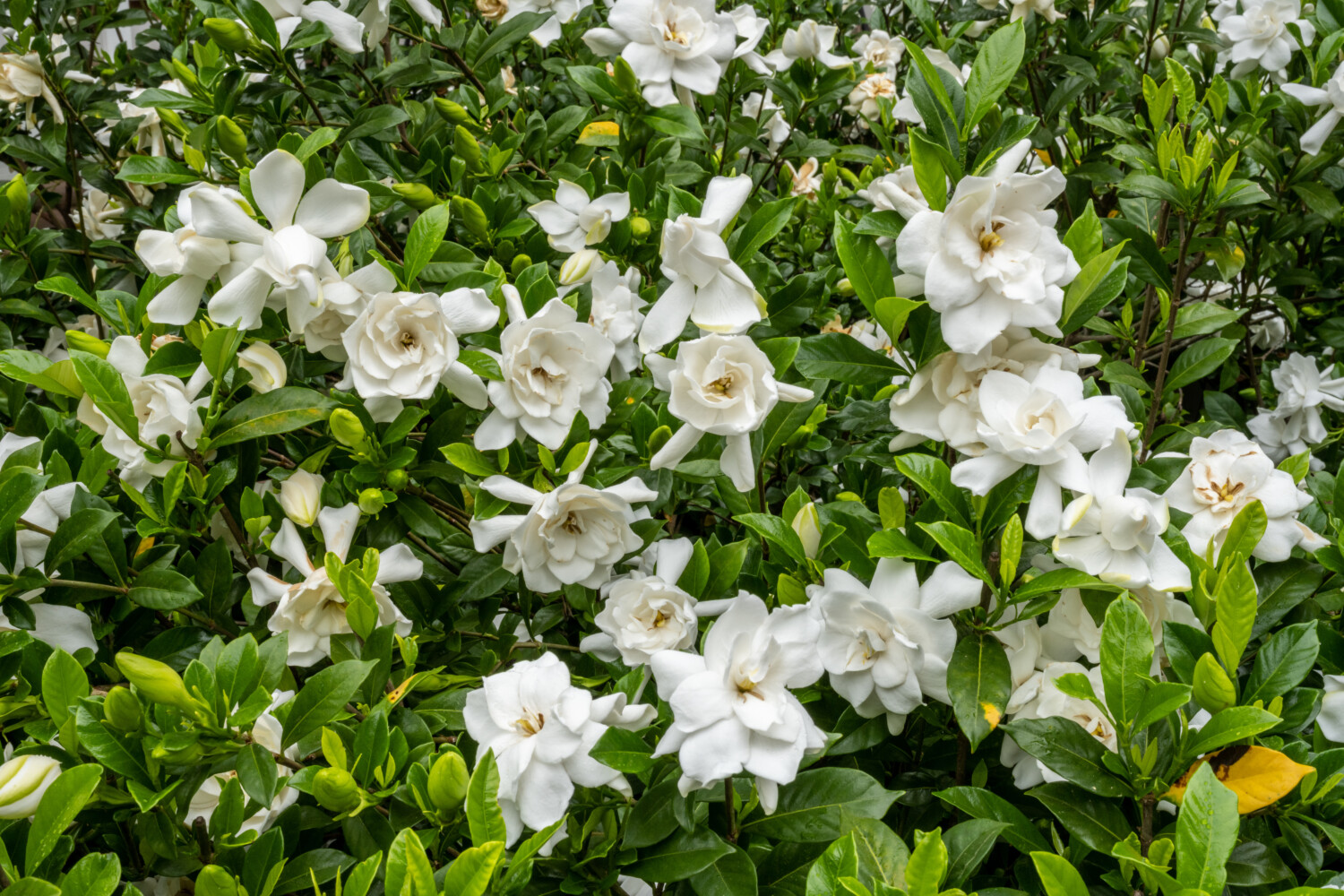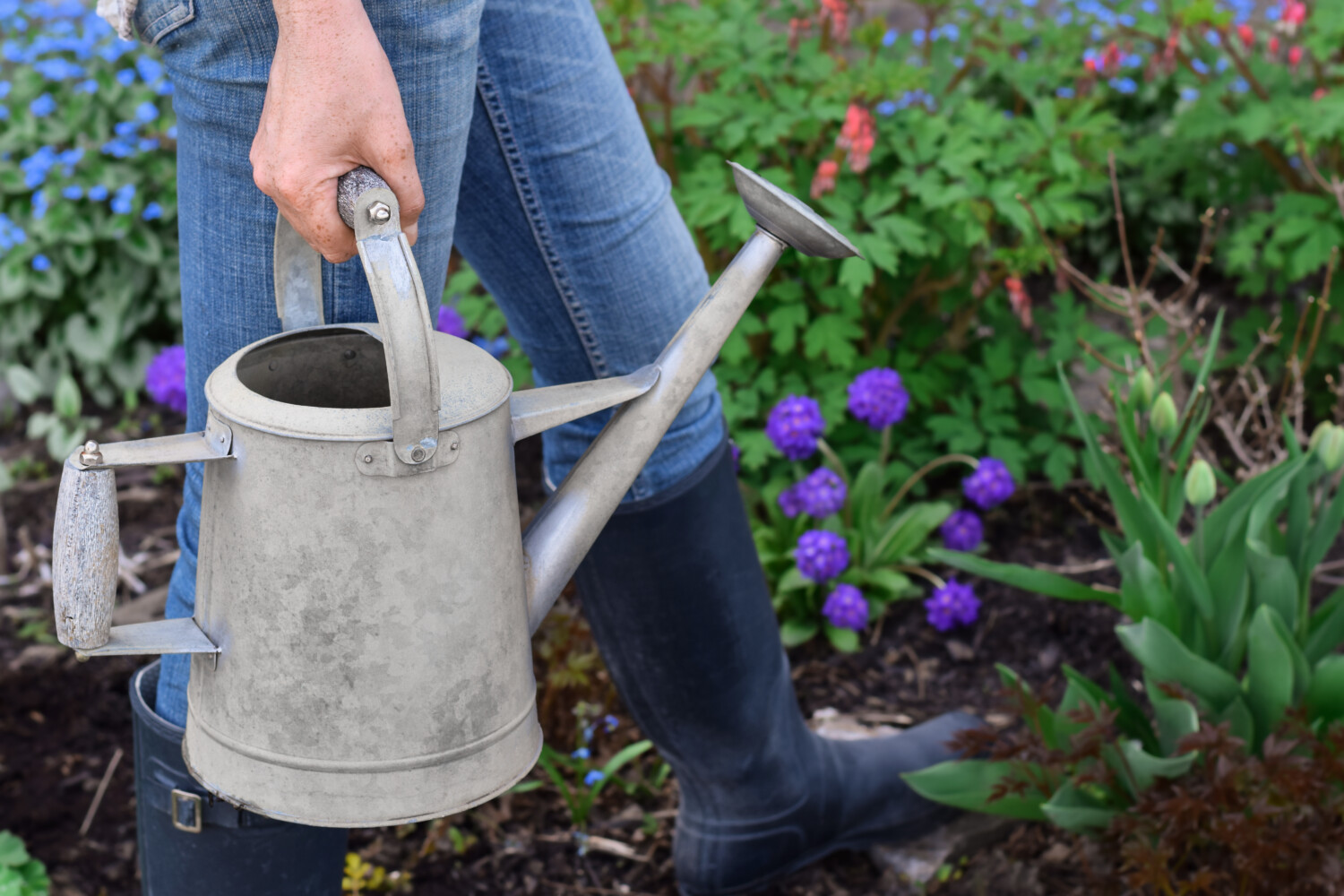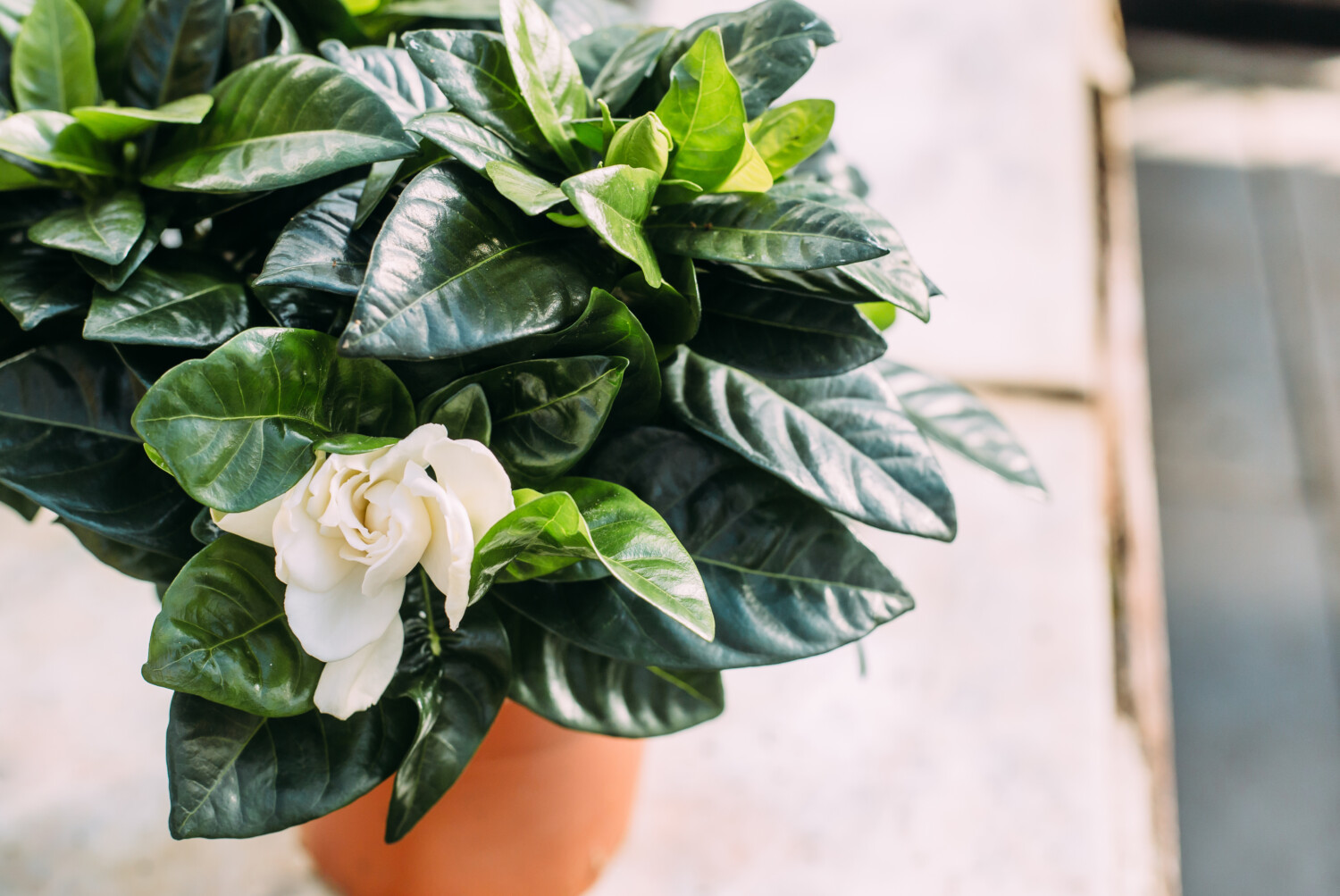If you’ve ever walked past a flowering gardenia plant, you know just how powerfully fragrant they are. The scent casts a wide net, stretching out to anyone who walks in relative proximity and is also known to linger. Its aroma is frequently used in perfume making and forms the heart of many popular perfumes on the market today. The scent of a gardenia is very sweetly floral and is balanced by spicy green notes and creamy undertones.
Gardenias bring a lot of visual appeal to your garden, and having them on hand is a gift, as they can be clipped and brought into the home to add beauty and fragrance. If you want to add gardenias to your garden, continue reading to learn everything you need to know about this gorgeous flower.

Where Does The Gardenia Plant Come From?
The gardenia plant, also known as Gardenia jasminoides, belongs to the Rubiaceae family of flowering plants (the same one that includes coffee). The flower, which is native to southern China, Korea and Japan, was introduced to the Western world after European traders discovered it and decided to plant it in southern Africa en route back home. While they intended to introduce the flower to Europe, it did not favor the European climate and failed to thrive.
The flower eventually found its way to American soil and was named after a Scottish botanist named Alexander Garden who lived in the U.S. and traded American plants. Garden ended up being the first person to plant gardenia in the U.S. in 1752, and the flower has been a favorite of gardeners ever since.
Key Gardenia Plant Facts
Gardenia flowers grow on evergreen shrubs, which range in height between 3 to 8 feet and can be equally as wide. The flowers of the gardenia shrub are creamy-white in color, and their leaves are dark green and waxy. The leaves are between 2 to 4 inches long, and 1 to 2 inches wide. Flowers can be anywhere between 2 to 4 inches, and some varieties have double flowers that are larger and have more petals. When planted outdoors, gardenia flowers bloom from late in the spring up to fall.
There are currently more than 200 varieties of gardenia. They are known for being a somewhat difficult plant, and can only survive in places where the temperature is consistently 60 degrees Fahrenheit or above.

Gardenia Planting and Growing Requirements
As mentioned, gardenia plants thrive in warm climates and can only grow in USDA plant hardiness zones 8 to 11. When it comes time to plant, they prefer to be placed in areas with abundant sunshine and only partial shade. Experts say that while they do prefer sun, some shade is also helpful to prevent their leaves from scorching and their buds from falling off. If they are being grown in a hot climate, they’ll thrive in a place where they receive sunshine in the morning and shade in the afternoon. If the temperature is cooler, it’s OK for them to receive sun all day. They also thrive in humid climates, so you can help them along by misting the plant daily.
They prefer to grow in moist, well-drained and acidic soil. It’s important to stay on top of watering and make sure the soil is consistently moist without allowing it to get too wet. In general, they should receive about an inch of water each week.
It’s recommended to lay down between 2 to 4 inches of mulch, which can include compost. Gardenia plants should be fertilized in the spring after frost is over with an extended-release fertilizer that is meant for plants that thrive in acidic soils. Follow up by fertilizing in six weeks, and avoid fertilizing them in the fall before they go into dormancy.

When it comes to pruning, be sure to only prune gardenias every other year, and only after blooming is complete. If you want to keep your bushes small and tight, you can prune more frequently, but it is only truly necessary to trim every other season. Be sure to make sure your garden shears are sharp.
If you don’t live in a warm climate, it is still possible to grow gardenia plants indoors. Be sure to plant them in a place where they can receive good sunlight (but not direct sunlight), such as near a window that gets sun in the morning and shade in the afternoon. Be sure to follow all other guidelines regarding soil pH, and fertilizing.

Pests And Diseases To Look Out For
Gardenia plants are prone to pests, including whiteflies, aphids and spider mites, to name a few. Whiteflies are most problematic in the southern U.S., and will pierce the leaves of the plant and suck its sap. Their presence eventually leads to an unpleasant black mold that covers and further damages the leaves. To control whiteflies you can use a pesticide spray or apply a horticultural oil to the plant.
Diseases that affect gardenias include powdery mildew, anthracnose, and the aforementioned soot mold. While some of these diseases can be controlled with fungicides, it’s also possible that some plants will need to be uprooted and thrown away.
As you can see, gardenias require a lot of care and attention, but we think the payoff is more than worth it for the gorgeous and fragrant blooms they provide.
This story originally appeared on Simplemost. Check out Simplemost for additional stories.



